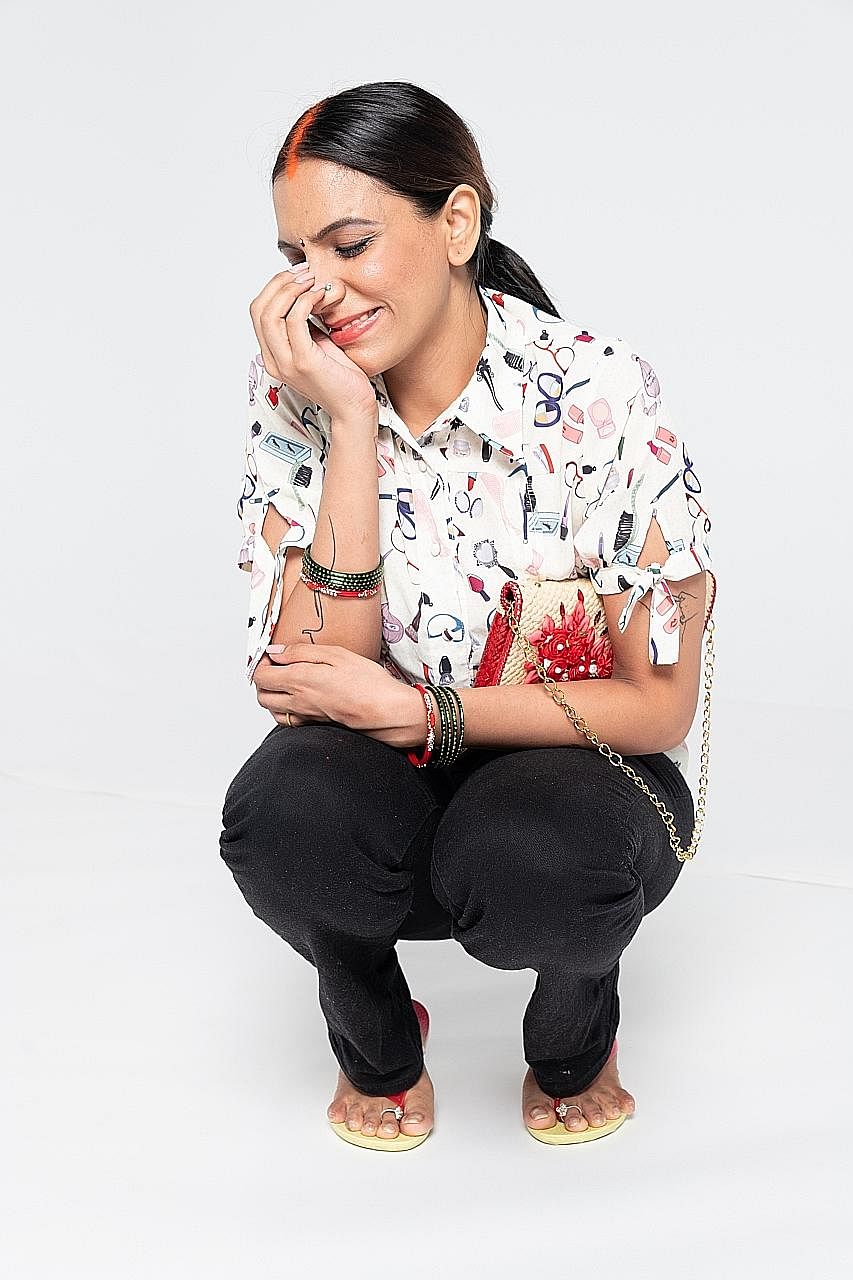Crazy Poor Sita is a grimly comedic, unavoidable encounter with the invisible poor in Singapore.
Black drapery cuts off most of the performance space in the Drama Centre Black Box so that viewers in the first row are close enough to touch creator-performer Sharul Channa, who takes on the role of Sita.
The cramped space, barely wide enough for the single mattress in the middle, offers an eye-opening visual of what life is like for those confined to a state-supported rental flat.
Sita's possessions are newspapers, clothes, a mattress, some containers of food and a whiteboard for her children's entertainment and education. All have been scrounged from "HDB shopping", she says with pardonable pride at how she repurposes what better-off Singaporeans throw away.
The production, which ended its run yesterday, is inspired by a report last year about challenges faced by women from low-income households when they try to work, issued by the Association of Women for Action and Research (Aware). Like many of these women, Sita has to care for young children and cannot work overtime because she cannot afford penalties imposed by childcare centres on parents who are late in picking up their children.
She was unable to study beyond secondary school, which further limited her job options. And though there are schemes to help her out of poverty, she sketches a heart-breaking column of her monthly expenses which shows just how difficult this is.

-
REVIEW / THEATRE
CRAZY POOR SITA
Sharul Channa
Drama Centre Black Box/Last Friday
A job that pays $1,500 a month is barely enough to cover basic needs, including transport and childcare expenses, as well as paying off her ex-husband's debts and supporting her mother.
Yet this salary puts her in a higher income bracket than others and excludes her from subsidies that might otherwise allow her to save money.
Crazy Poor Sita stays on the side of incisive reflection, avoiding the trap of poverty porn.
Channa is no newcomer to using the stage to highlight social issues.
Last year's Disco Sheela And Other Indian Superwomen, a similar comedic monologue, looked at the unrealistic expectations traditionally placed on women.
She also directed an adaptation of Ibsen's Doll House, Gudiya Ghar for theatre group WeCanDoIt, which addressed how Asian households fail to recognise emotional abuse, last year.
The title Crazy Poor Sita is an ironic nod to what Singapore is known for worldwide - the Hollywood hit Crazy Rich Asians, a movie which was criticised for excluding minority ethnicities from starring roles and glossed over the fact that most of the country is populated by residents of Housing Board flats.
It is easy to make certain Singaporeans invisible. Just by looking at HDB buildings, few might be able to recognise which of these state-funded homes are leased to people in the poverty trap.
By bringing viewers into Sita's life, Channa makes them complicit in the system and ready to think about ways to make it better.
She has hopes of expanding this production, supported by Aware and charity group Daughters of Tomorrow, into a travelling show for greater impact.
One hopes that this materialises. Sita deserves to be taken out of her rental flat.

